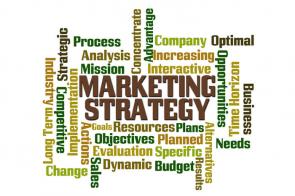The First Two Qualities of a True Business Leader
A leader is not just anyone who people follow, for people may follow a person for many reasons. In business, a leader is anyone who can think out and set goals that are attractive to both businesses and employees and also can attract and influence followers to share those goals. The old school leadership version of command and control is good in the military. In a business workplace where the business's ability to attract and retain talent, and consequently profit, depends upon humans possessing extensive freedom of choice, a leader requires entirely different attributes.
The Six Thinking Hats of Decision Making
Among the various learning and problem solving techniques espoused by Edward de Bono, including lateral thinking, DATT (Direct Attention Thinking Tools), CoRT thinking and Six Thinking Hats, STH has a special place for everyday problem solvers. Especially the ‘purple hat’ or the critical thinking hat is worn by managers. The purple hat essentially represents an attitude that says “That won’t work. We have never done that before. It is crazy and stupid.”
Three Critical Lessons in Performance Management
Where organizations are fully performance driven, managing ‘performance management’ is of the highest priority. Difficulties arise if executives in charge of drawing up and implementing performance management practices lack the required skills or outlooks for translating lessons learnt elsewhere on to the instant workplace and organization. Balanced performance appraisal is one of the keystones in designing performance management blueprints and another is the recognition that it’s ultimately the staff that runs the show when it comes to service delivery.
Attaining the Holy Grail of Realizing Company Mission and Vision
If you ever want to know whether the man appointed at the top is truly a CEO or just improvised COO material, ask him one question: What steps have you taken to translate the Company Vision into behavioral competencies and measurable events?
The Dangers of Unquestioning Loyalty in Executing Company Policies
The first obstacle before a company management is in deciding when to take a decision. Policies drafted need to be implemented through strategies and effective execution of strategies need continual innovation on techniques so that strategies can meet the demands of policies. In this unchallenged chain of events, there lies one vital flaw, very often exploited at every level by procrastinators and incompetent administrators – unflinching loyalty to policies as an excuse to decide that no decision needs to be taken, even in the face of obvious needs. Typically, this approach is termed as ‘obliviousness’ to need issues.
Three Negative Outlooks and Workplace Performance
Feelings of negativity do not always end up in poor performance in the workplace unless you allow them to. Awareness of common types of negative emotions associated with the workplace, and knowledge of the channels through which they usually flow can help you control negative emotions and use their energy for superior performance. Interestingly, those in the normal workplace receive surrounding support that helps to buffer their negativity, but for those at the top, especially employers, it is only their personal awareness of situations that can save the day.
We Have to Talk: A Step-By-Step Checklist for Difficult Conversations
Think of a conversation you've been putting off. Got it? Great. Then let’s go.
There are dozens of books on the topic of difficult, crucial, challenging, important (you get the idea) conversations (I list several at the end of this article). Those times when you know you should talk to someone, but you don't. Maybe you've tried and it went badly. Or maybe you fear that talking will only make the situation worse. Still, there's a feeling of being stuck, and you'd like to free up that stuck energy for more useful purposes.
Change Management: Dynamic Resource Optimization
Whether you decide to manage change or change managers, letting resource optimization off from your sight for a single instance can cause hurt.
Change Management in Face of Globalization
Globalization of a company brings its own set of benefits and costs. Often the costs include the consequences of unmanaged global expansion without considering the stakes and concerns of the workforce and infrastructure that is already there, the one that enabled the company to think global in the first instance. This article deals with the aspects of globalizing, outsourcing, and expanding the operations of a service based company.
Change Management: When Upgrading a Workforce
Creating a culture of change is essential in today’s organizations though the tradition has been for employers to offer stability and predictability. And those traditions create barriers to development. So, for those who manage change, the biggest challenge is how to maintain the relationship of trust between employers and employees while announcing workforce change and creating an organization where change is the norm rather than the exception.
Downsizing a Workforce – Some Pointers in Change Management
With the nation still in the throes of a receding recession and layoff decisions and bankruptcy reorganizations the order of the day, most employers have become experts in downsizing as of late. However, what becomes common becomes ordinary, and when we start viewing something as an ordinary process not deserving our special attention, then slips and silly mistakes are bound to happen.
Time Management: Killer Performance Can Kill Your Company
Time-management is so heavily preached and effectively ignored during performance assessment, that some common misperceptions about the nature of time-management have become rooted in modern management practices.








